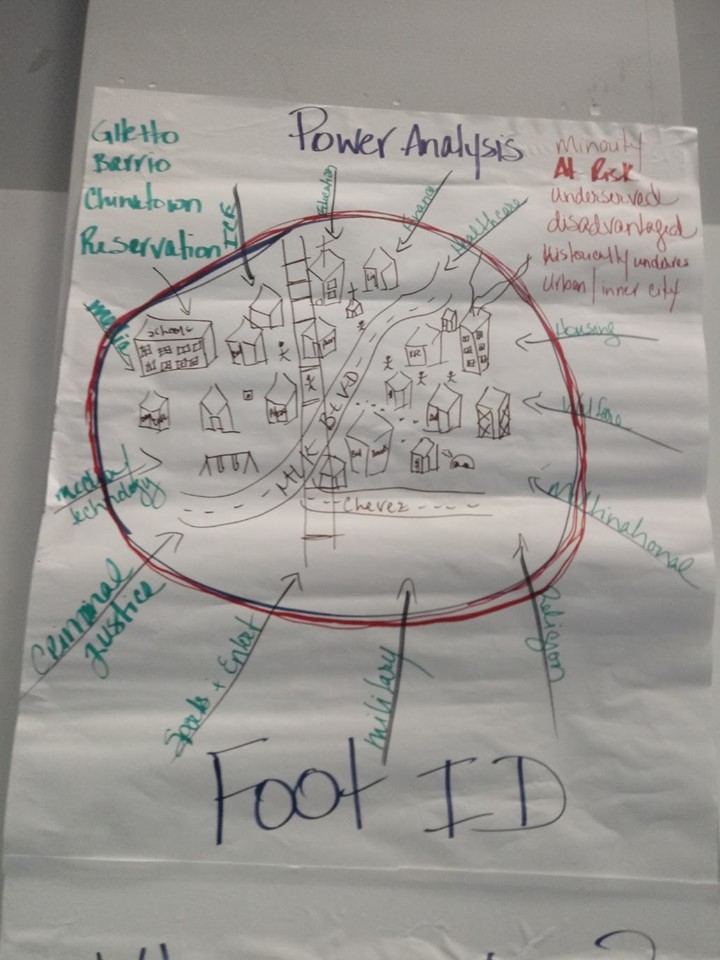First, we have to understand our demographics
One of the first steps on our Racial Equity journey was to commission hyper local analyses of Census Bureau data. Here is what BlackDemographics.com found:

Next, we dig into the “Life Areas”
Then-Board Member Robin Benton asked us to describe a poor community. We saw physical characteristics and acknowledged the labels that are often put on these places and the people who live there.
Then we identified what systems exist that make an impact on them:
- Health
- Housing
- Education
- Criminal Justice
- Environment
- Social Services
- Economics
- Culture/Communication
This list led us to the power analysis. We conducted conversations on the first two systems. We used the following questions:
- What entities affect life area/system x?
- How does life area/system x work together with any other system?
- How does life area/system x oppress, exploit, exclude or underserve poor communities?
Ultimately, former Intern Katlyn Johns conducted further research. She used all of the above information to create brochures on housing and health disparities.
In summer of 2022, we talked about education with the young people assigned to work for us from the City’s GRow 1000 program. One outcome of this discussion was an interview project completed by MSW Intern D’Angelo Starks. He asked neighbors to describe what they do for work, and shared those videos with elementary students at Coit Creative Arts Academy.






